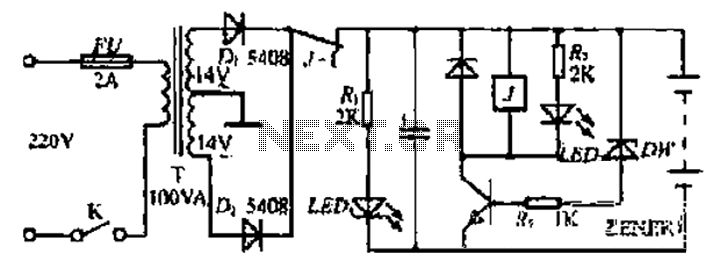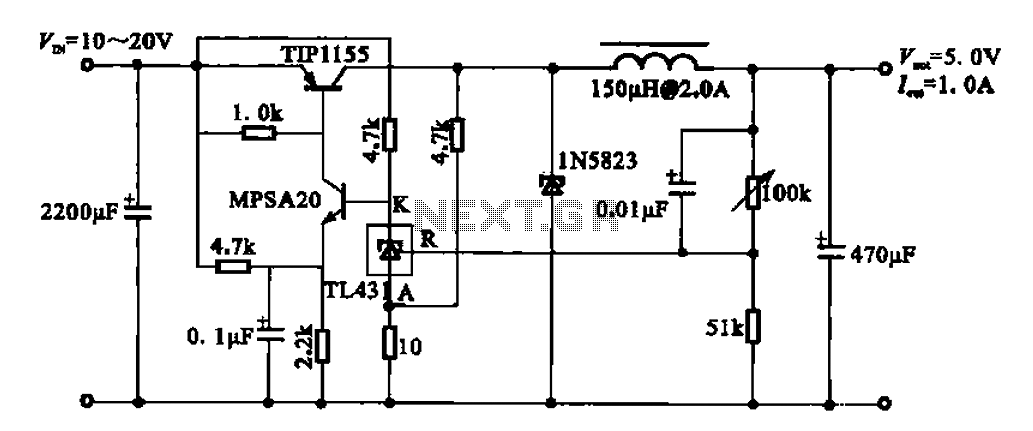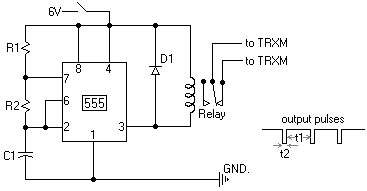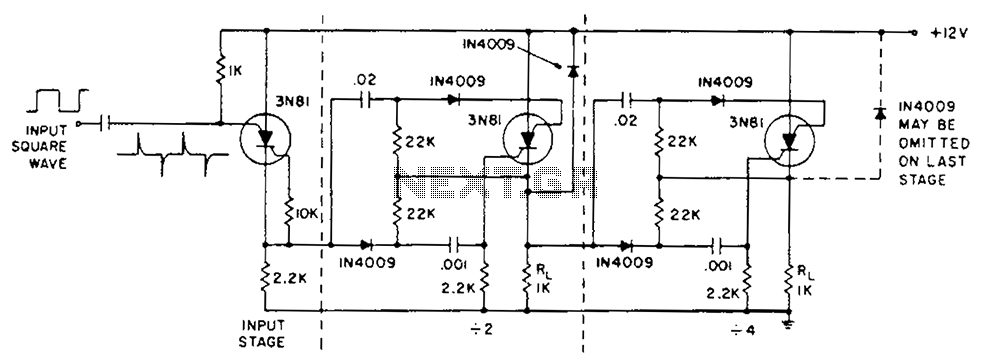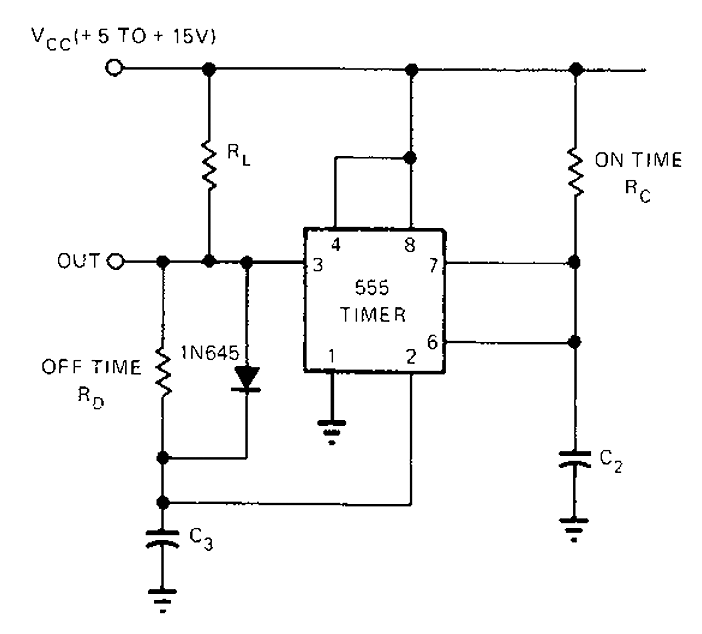
Metering circuit using PbS PbSe
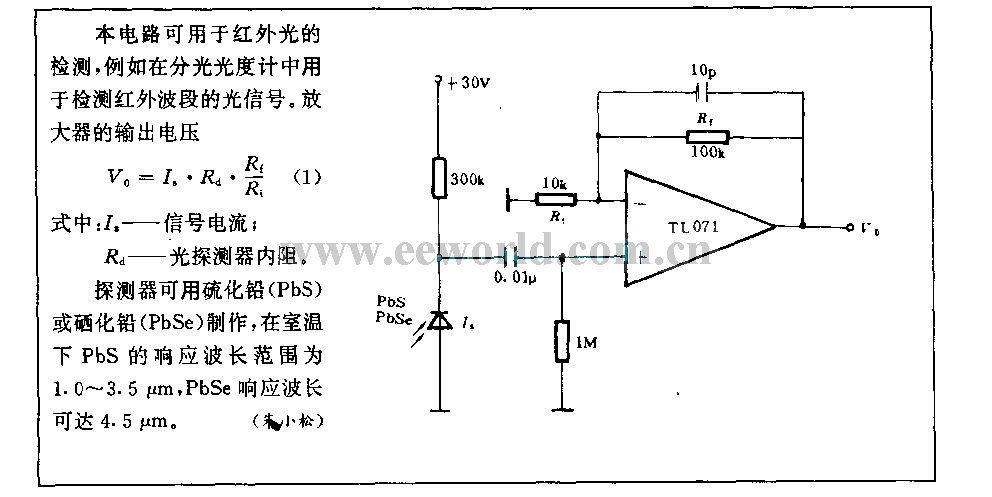
This circuit can be used for detecting infrared light; for example, it is utilized for detecting infrared band light signals in a spectrophotometer. The amplifier output voltage Vo is given by the formula Vo = Is·Rd·Rf/Ri, where Is is the signal current, Rd is the essential resistance of the optical detector. The detector can be constructed using lead sulfide (PbS) or lead selenide (PbSe), which respond at room temperature.
The described infrared light detection circuit is essential for applications such as spectrophotometry, where precise measurement of light intensity in the infrared spectrum is critical. The circuit typically comprises an optical detector, which can be either a lead sulfide (PbS) or lead selenide (PbSe) photoconductor. These materials are chosen for their sensitivity to infrared wavelengths, making them suitable for various applications in optical sensing.
The operational principle of the circuit relies on the generation of a signal current (Is) when infrared light strikes the detector. The current produced is directly proportional to the intensity of the incoming infrared light. The essential resistance (Rd) of the optical detector plays a significant role in determining the overall sensitivity and performance of the circuit. The output voltage (Vo) from the amplifier is calculated using the formula Vo = Is·Rd·Rf/Ri, where Rf is the feedback resistance and Ri is the input resistance.
In the circuit design, careful selection of the feedback and input resistances is crucial to optimize the gain and bandwidth of the amplifier, thereby ensuring accurate signal amplification. The circuit may also include additional components such as capacitors for filtering and stability, as well as protection diodes to prevent damage from over-voltage conditions.
Overall, this infrared light detection circuit represents a fundamental building block for devices that require the measurement of light in the infrared spectrum, with applications ranging from environmental monitoring to industrial process control.This circuit canbeused for detecting infrared light, for example, it is used for detecting infrared band light signal in spectrophotometer. Amplifier output voltage Vo=Is·Rd·Rf/Ri wherein : Is-signal current; Rd-optical detector essential resistance Dector can bemade by lead sulphide (PbS) or lead selenide (PbSe), and at room temperature, PbS response..
🔗 External reference
The described infrared light detection circuit is essential for applications such as spectrophotometry, where precise measurement of light intensity in the infrared spectrum is critical. The circuit typically comprises an optical detector, which can be either a lead sulfide (PbS) or lead selenide (PbSe) photoconductor. These materials are chosen for their sensitivity to infrared wavelengths, making them suitable for various applications in optical sensing.
The operational principle of the circuit relies on the generation of a signal current (Is) when infrared light strikes the detector. The current produced is directly proportional to the intensity of the incoming infrared light. The essential resistance (Rd) of the optical detector plays a significant role in determining the overall sensitivity and performance of the circuit. The output voltage (Vo) from the amplifier is calculated using the formula Vo = Is·Rd·Rf/Ri, where Rf is the feedback resistance and Ri is the input resistance.
In the circuit design, careful selection of the feedback and input resistances is crucial to optimize the gain and bandwidth of the amplifier, thereby ensuring accurate signal amplification. The circuit may also include additional components such as capacitors for filtering and stability, as well as protection diodes to prevent damage from over-voltage conditions.
Overall, this infrared light detection circuit represents a fundamental building block for devices that require the measurement of light in the infrared spectrum, with applications ranging from environmental monitoring to industrial process control.This circuit canbeused for detecting infrared light, for example, it is used for detecting infrared band light signal in spectrophotometer. Amplifier output voltage Vo=Is·Rd·Rf/Ri wherein : Is-signal current; Rd-optical detector essential resistance Dector can bemade by lead sulphide (PbS) or lead selenide (PbSe), and at room temperature, PbS response..
🔗 External reference
